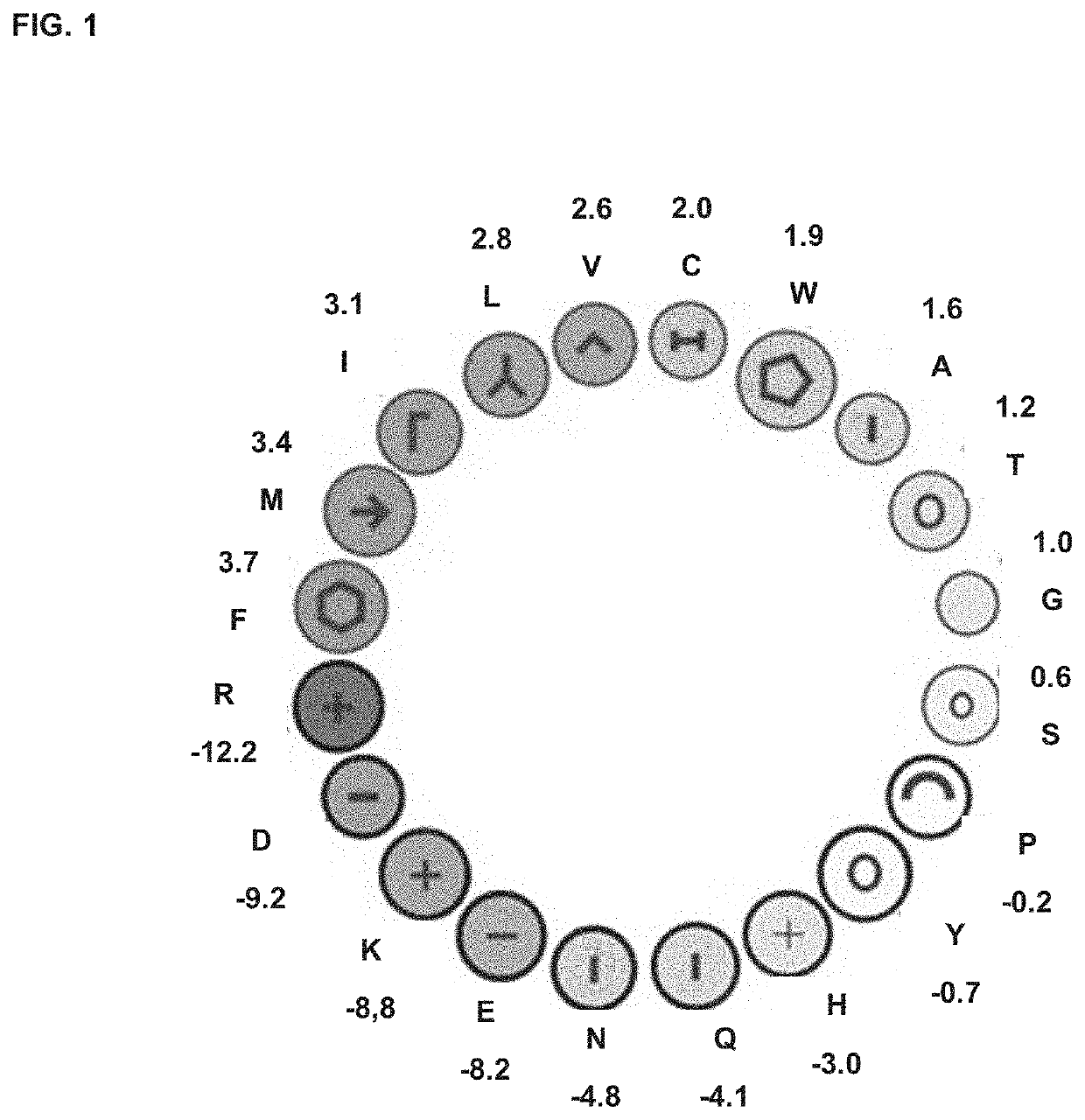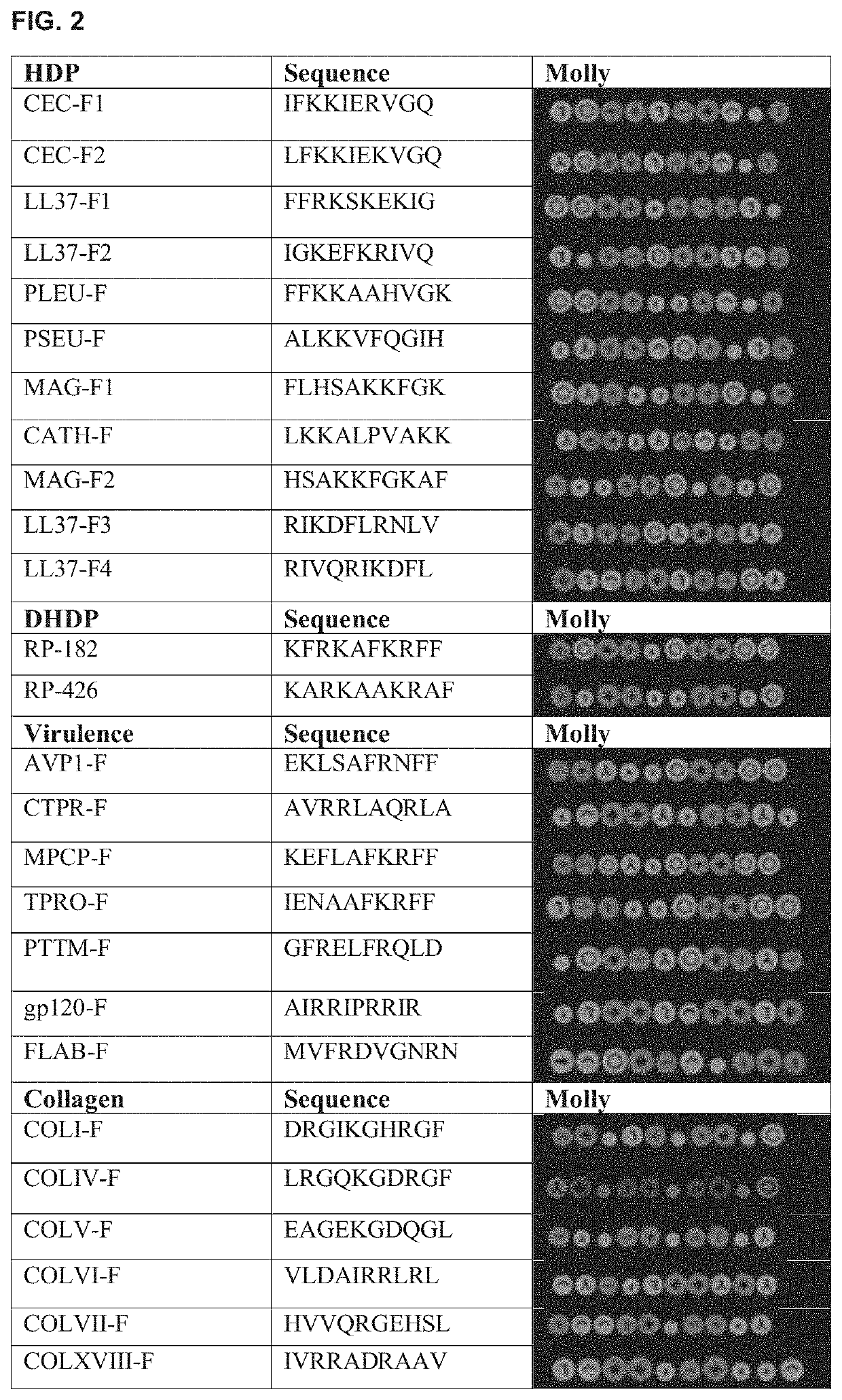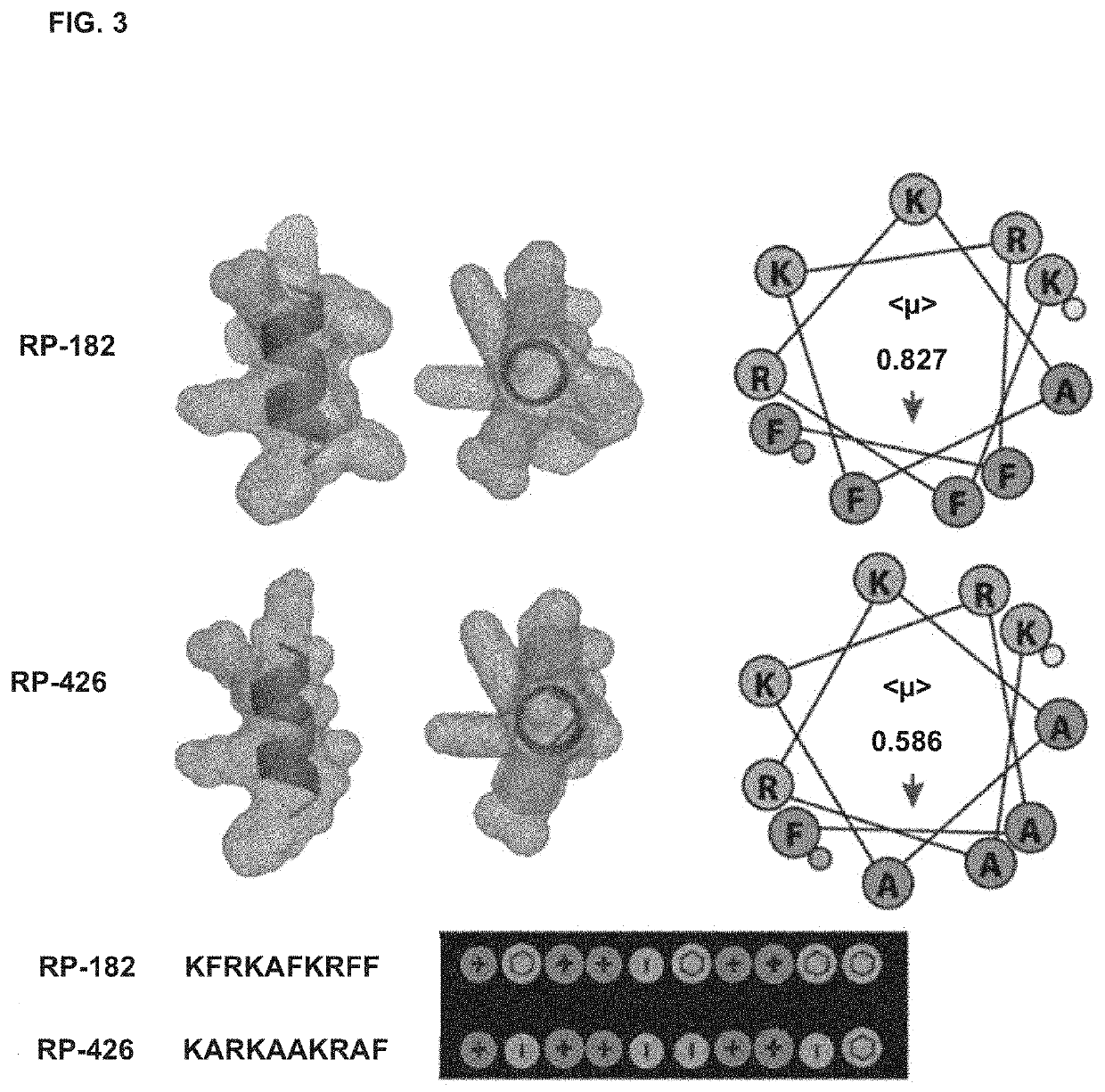Methods for Modulating Macrophage Activity
a macrophage and activity technology, applied in the field of methods for modulating macrophage activity, can solve problems such as limited positive results
- Summary
- Abstract
- Description
- Claims
- Application Information
AI Technical Summary
Benefits of technology
Problems solved by technology
Method used
Image
Examples
example 1
al Homology Screening
[0361]Native host defense peptides (HDPs) exist as short α-helices or β-sheets of 10 to 40 amino acids and frequently have a dichotomous amphipathic charge distribution with clusters of amino acids having polar charges arranged along an opposing plane of amino acids with hydrophobic residues A database of 431 α-helical antimicrobial peptides (AMPs) and HDPs (http: / / aps.unmc.edu / AP / main.php) were screened using Molly font under the hypothesis that phylogenetically conserved structural domains within naturally occurring HDPs harbor important innate immune functions, and that such select structure / function paradigm domains can be isolated and optimized for the design of novel therapeutics.
[0362]Instead of homology comparisons using primary amino acid alignments, Molly font (Molly Hydrophobicity Wheel) assesses the three key biophysical features: hydrophobicity, electrostatic charge of amino acids, and steric amino acid volume to detect structural homologies via the...
example 2
RP-182 on Cell Function
[0370]It was found that RP-182 induces a program of phagocytosis, autophagy, and apoptosis in human and murine M2 macrophages.
[0371]To investigate the impact of RP-182 binding and the induced conformational change of CD206 on cell function, first the effects of RP-182 were examined by global RNASeq analysis. Volcano blot analysis of gene expression changes between vehicle- and RP-182-treated M2 BMDMs showed differentially expressed genes (DEGs) skewed towards upregulation. Seven among the eight top DEGs were cytokines or regulators of the classical pro-inflammatory M1 phenotype showing >10- to 100-fold increased expression levels after 2 hours treatment (FIG. 17). Transcriptomic changes following RP-182 treatment in myeloid progenitors of murine bone marrow-derived macrophages (BMDM) polarized into M1 and M2 phenotypes occurred selectively in M2-polarized macrophages with no genes differentially expressed in M1 macrophages after 2 hours, six DEGs after 6 hours...
example 3
RP-182 on M2 Macrophages
[0375]It was found that RP-182 reprograms M2 macrophages towards a M1-like phenotype. The observation that viable cell fractions after 48 hours of treatment with RP-182 at highest concentrations were greater than the initial fraction of CD206 negative cells (31% viable cells after max response vs 6.8% CD206-negative cells in human M2 macrophages; 17.2% viable cells vs 12.7% CD206− negative cells in M2 BMDMs) led us to examine a possible second mechanism of action of RP-182. It was speculated that M2 macrophages reprogrammed by RP-182 towards a M1-like phenotype may lose CD206 expression and might not be subject to the cell killing function of RP-182.
[0376]Flow cytometry experiments of CD11b+F4 / 80+Gr-1− macrophages gated on alive cells using the M1 marker CD86 and M2 marker CD206 showed rapid induction of CD86 expression with an increase in the CD86+CD206+ double-positive macrophages fraction (87.8% vs 10.3% in vehicle-treated control) within 30 min upon treat...
PUM
| Property | Measurement | Unit |
|---|---|---|
| binding energy | aaaaa | aaaaa |
| hydrophilic | aaaaa | aaaaa |
| hydrophobic | aaaaa | aaaaa |
Abstract
Description
Claims
Application Information
 Login to View More
Login to View More - R&D
- Intellectual Property
- Life Sciences
- Materials
- Tech Scout
- Unparalleled Data Quality
- Higher Quality Content
- 60% Fewer Hallucinations
Browse by: Latest US Patents, China's latest patents, Technical Efficacy Thesaurus, Application Domain, Technology Topic, Popular Technical Reports.
© 2025 PatSnap. All rights reserved.Legal|Privacy policy|Modern Slavery Act Transparency Statement|Sitemap|About US| Contact US: help@patsnap.com



